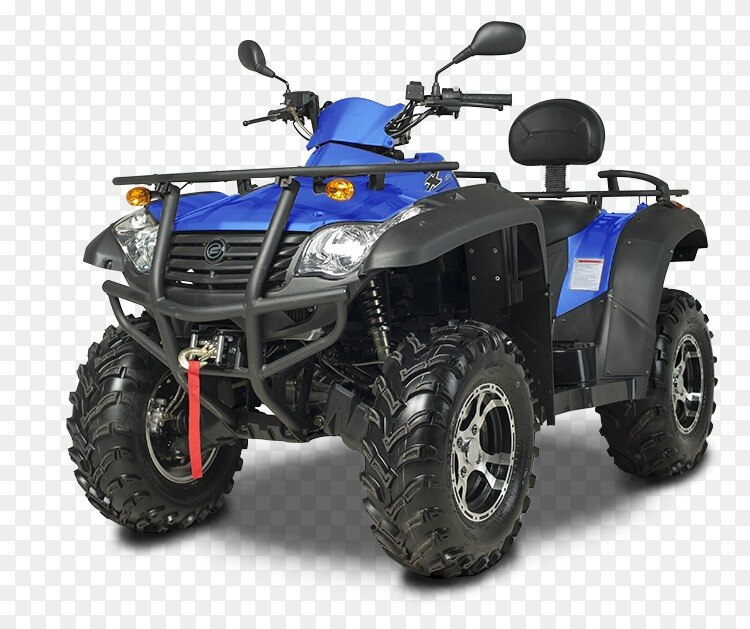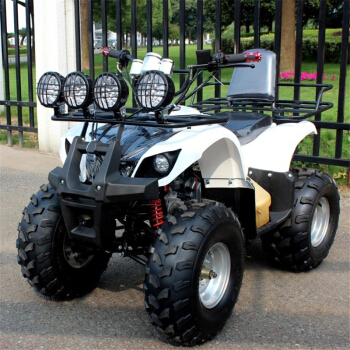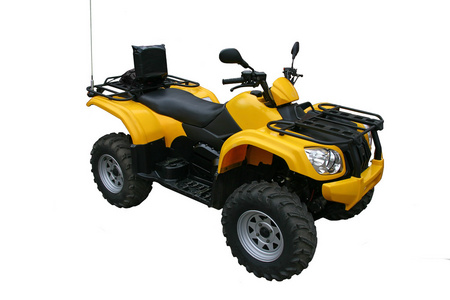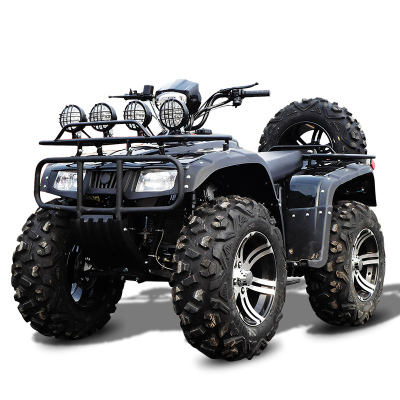Four-wheel all-terrain vehicle purchase skills

ATV (ATV) is a kind of ORV (non-road vehicle). Its full English name is All Terrain Vehicle, which means "a vehicle suitable for all terrains" in Chinese. In the European Union and the United States, ATV and UTV, BAJA, Go-kart, off-road two-wheeled motorcycles, etc. are collectively called ORV (non-road vehicles). China's official organization is called four-wheel all-terrain vehicles, and has formulated its production standard QC/T760-2006 "General technical requirements for four-wheel all-terrain vehicles."
The ATV is an all-terrain vehicle—All Terrain Vehicle is abbreviated as the common name of ATV, also known as "all-terrain four-wheel off-road locomotive." In the European Union and the United States, ATV and UTV, BAJA, Go-kart, off-road two-wheeled motorcycles, etc. are collectively called ORV (non-road vehicles). ATV A vehicle that can travel on any terrain and can walk freely on terrain that is difficult for ordinary vehicles to maneuver. The vehicle is simple and practical, has good off-road performance, and generally has no canopy in appearance. In fact, it is very difficult for us to express it with a simple Chinese name; according to its appearance, it is reluctant to translate it into [all-terrain four-wheel off-road locomotive], which feels very awkward. Domestically, it has been called [ATV], which is wrong. On soft sand, the ATV's large tires increase the contact area with the ground to generate greater friction. With unique tread patterns, the tires are not easy to slip and run on the sand; therefore, the misunderstanding is called [ATV] . ATVs with good quality and excellent performance can not only travel on beaches; riverbeds, forest roads, streams and even harsher deserts can be easily overcome. Carrying people or transporting goods makes the ATV function to the fullest... it can be called an all-powerful tool of action. So, please don't call it "ATV" anymore. It is an excellent means of transportation and one of the great inventions of mankind. Only limited by the local environment, otherwise it will be one of people's best companions, so call it ATV!
For newly purchased ATVs, what users most urgently need is how to judge whether it is in good technical condition? What is its identification standard? In order to facilitate users to correctly identify and judge when purchasing ATVs, a brief introduction is now provided for reference.
1. Starting performance. After the newly purchased ATV is filled with gasoline and engine oil (refers to two-stroke vehicles, separated lubrication type) and all starting preparations are ready, the starting method is correct. A good-performance ATV should be able to operate at -10℃~+30℃ Start the operation under the ambient temperature, and the start time is not more than 15 seconds. Otherwise, it indicates poor starting performance.
2. Running performance. After the engine is started, warm up for 3 to 5 minutes (the specific warm-up time may depend on the local ambient temperature: generally a little longer in winter and shorter in summer). The engine should run smoothly at idling speed, its speed should not be high and low, and the sound is soft and there is no obvious noise, which means that the engine idling conditions are normal. At this time, you should listen to the meshing sound of the crankcase (that is, the gearbox) and the transmission parts. The response is slight, there is no noise, and the power transmission is correct and reliable. The operation should be stable, no abnormal noise, good power performance and acceleration performance, normal fuel combustion, and no overheating of the engine. After parking, touching the right cover of the crankcase should not be too hot. The temperature of the engine oil measured with a thermometer should be below 85°C. After restarting, the engine should run smoothly at idling speed, and only allow the monotonous sound of mixed gas combustion explosion. Loosen the throttle handle after urging the throttle, and the engine must not stall.
3. Speed up performance. When the whole vehicle is in good condition, the ATV can start acceleration and overtake acceleration on a flat road, and pass 200 miles/hour should be ≤13 seconds), which shows that the ATV has good acceleration performance. If the crankshaft speed increases, there is a pause or the increase speed is slow, indicating that the engine has poor acceleration performance. You can also ride an ATV for a road test. When the accelerator is suddenly increased, the speed of the car can increase sharply, and the driver has an obvious sense of reclining while sitting on the car, which indicates that the engine has excellent acceleration performance and normal engine power. If the vehicle speed can only be increased slowly after increasing the throttle, and it can be significantly improved even after driving hundreds of meters, it can be judged that the acceleration performance of the engine is poor.
4. The braking performance of the ATV. The ATV is a sports product, and its safety performance is the first in the running performance of the ATV, and riders should treat it with caution. It can be confirmed by actual vehicle test when purchasing a vehicle. First choose a dry and flat asphalt pavement or cement pavement with no longitudinal and transverse slopes. Lightweight ATVs (that is, total engine displacement ≤50cc) at a speed of 20 kilometers per hour, and ATVs (that is, total engine displacement ≥50cc) at a speed of 20 kilometers per hour. When driving at a speed of 30 kilometers per hour, when the speed of the ATV is basically stable, use the front and rear braking devices at the same time to stop the ATV. The braking distance of the ATV should not exceed 4 meters, and the ATV should not exceed 7 meters, and the tires of the vehicle have obvious drag marks on the road, which indicates that the braking performance of the vehicle is good. It must be pointed out that when testing the braking performance of the ATV, the straightness of the front and rear wheels of the ATV must be checked separately (that is, the front and rear wheels should be in a straight line). The front and rear wheels of the ATV can land on the ground. When the vehicle is straightened, another person is about 3 meters in front of the ATV, and visually check whether the front and rear wheels of the vehicle are offset. The safest way is to brake Test to verify. At the moment when the ATV brakes at the speed of the above test brake device, if the rear wheel of the vehicle shakes significantly after the brake device works, it can be judged that the front and rear wheels of the ATV are offset. Since the straightness of the front and rear wheels of the vehicle is related to the safety performance of the ATV, it must not be ignored when purchasing.
5. The shock absorption effect of the ATV. In order to alleviate and attenuate the impact and vibration of the ATV during the driving process due to the unevenness of the road, ensure the smoothness and comfort of the driving, and help improve the service life of the ATV and the stability of the handling, the ATV is equipped with Shock absorber device. When purchasing, the driver can ride on the ATV and deliberately choose the uneven road to drive. If there is a strong sense of vibration, it indicates that the ATV has poor shock absorption performance; if the driver only feels slight fluctuations without obvious vibration, it indicates that the ATV has a good shock absorption effect.
When purchasing an ATV, you should also check whether the vehicle's operating mechanism is flexible, whether the sound and light equipment on the vehicle is intact, whether the control of the electrical switches is sensitive, whether the electric circuit and the oil circuit are unobstructed, etc. Check the appearance of the vehicle, mainly to see whether the painted parts are bright and uniform, whether there are spots and other defects on the surface of the electroplated parts, and whether all the fasteners of the ATV are firm.